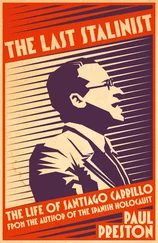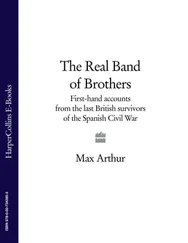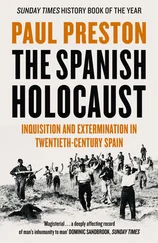Accordingly, the Civil War of 1936–9 represented the ultimate expression of the attempts by reactionary elements in Spanish politics to crush any reform which might threaten their privileged position. The recurring dominance of reactionary elements was a consequence of the continued power of the old landed oligarchy and the parallel weakness of the progressive bourgeoisie. A concomitant of the tortuously slow and uneven development of industrial capitalism in Spain was the existence of a numerically small and politically insignificant commercial and manufacturing class. Spain did not experience a classic bourgeois revolution in which the structures of the ancien régime were broken. The power of the monarchy, the landed nobility and the Church remained more or less intact well into the twentieth century. Unlike Britain and France, nineteenth-century Spain did not see the establishment of a democratic polity with the flexibility to absorb new forces and to adjust to major social change. That is not to say that Spain remained a feudal society but rather that the legal basis for capitalism was established without there being a political revolution. Accordingly, with the obvious difference that her industrial capitalism was extremely feeble, Spain followed the pattern established by Prussia.
Indeed, even until the 1950s, capitalism in Spain was predominantly agrarian. Spanish agriculture is immensely variegated in terms of climate, crops and land-holding systems. There have long existed areas of commercially successful small and medium farming operations, especially in the lush, wet hills and valleys of those northern regions which also experienced industrialization, Asturias, Catalonia and the Basque Country. However, throughout the nineteenth century and for the first half of the twentieth, the dominant sectors in terms of political influence were, broadly speaking, the large landowners. In the main, the latifundios , the great estates, are concentrated in the arid central and southern regions of New Castile, Extremadura and Andalusia, although there are also substantial latifundios to be found scattered in Old Castile and particularly in Salamanca. The political monopoly of the landed oligarchy was periodically challenged by the emasculated industrial and mercantile classes with virtually no success. Until well after the civil war, the urban haute bourgeoisie was obliged to play the role of junior partner in a working coalition with the great latifundistas . Despite sporadic industrialization and a steady growth in the national importance of the political representatives of the northern industrialists, power remained squarely in the hands of the landowners.
There was never any strong possibility in Spain that industrialization and political modernization would coincide. In the first half of the nineteenth century, the progressive impulses, both political and economic, of the Spanish bourgeoisie were irrevocably diverted. The removal of feudal restrictions on land transactions combined with royal financial problems in the 1830s and the 1850s to liberate huge tracts of aristocratic, ecclesiastical and common lands. This not only diminished any impetus towards industrialization but, by helping to expand the great estates, also created intense social hatreds in the south. The newly released land was bought up by the more efficient among existing landlords and by members of the commercial and mercantile bourgeoisie attracted by its cheapness and social prestige. The latifundio system was consolidated and the new landlords were keen for a return on their investment. Unwilling to engage in expensive projects of irrigation, they preferred instead to build their profits on the exploitation of the great armies of landless day labourers, the braceros and jornaleros . The departure of the more easy-going clerics and nobles of an earlier age together with the enclosing of common lands removed most of the social palliatives which had hitherto kept the poverty-stricken south from upheaval. Paternalism was replaced by repression as the Civil Guard was created to form a rural armed police with the principal function of guarding the big estates from the labourers who worked on them. Thus, the strengthening of the landed oligarchy exacerbated an explosive social situation which could only foster the reactionary tendencies of the owners. At the same time, the syphoning into the land of the capital owned by the merchants of the great sea ports and Madrid bankers correspondingly weakened their interest in modernization.
Continued investment in land and widespread intermarriage between the urban bourgeoisie and the landed oligarchy debilitated those forces committed to reform. The feebleness of the Spanish bourgeoisie as a potentially revolutionary class was underlined in the period from 1868 to 1874, which culminated in the chaos of the First Republic. With population growth in the middle of the century increasing pressure on the land, unskilled labourers had flocked to the towns and swelled the mob of unemployed who were highly sensitive to increases in bread prices. Hardly less wretched was the position of the urban lower middle class of teachers, officials and shopkeepers. Conditions were perhaps worst in the Catalan textile industry which produced all the horrors of nascent capitalism – long hours, child labour, overcrowding and low wages. When the American Civil War cut off supplies of cotton in the 1860s, the consequent rise in unemployment combined with a depression in railway construction to drive the urban working class to desperation. In 1868, this popular discontent combined with a movement of middle-class and military resentment of the clerical and ultra-conservative leanings of the monarchy. A number of pronunciamientos by liberal army officers together with urban riots led to the overthrow of Queen Isabel II in September 1868. The two movements were ultimately contradictory. The liberals were terrified to find that their constitutionalist rebellion had awakened a revolutionary movement of the masses. To make matters worse, a rebellion began in Spain’s richest surviving colony, Cuba. The chosen replacement monarch, Amadeo of Savoy, abdicated in despair in 1873. In the ensuing vacuum, the First Republic was established after a number of working-class risings, an intolerable threat to the established order which was crushed by the army in December 1874.
In many respects, 1873–4 was to Spain what 1848–9 had been elsewhere in Europe. Having plucked up the courage to challenge the old order, the bourgeoisie was frightened out of its reforming ambitions by the spectre of proletarian disorder. When the army restored the monarchy in the person of Alfonso XII, reform was abandoned in return for social peace. The subsequent relation of forces between the landed oligarchy, the urban bourgeoisie and the remainder of the population was perfectly represented by the political system of the 1876 monarchical restoration. Two political parties, the Conservative and the Liberal, represented the interests of two sections of the landed oligarchy, respectively the wine and olive growers of the south and the wheat growers of the centre. The differences between them were minimal. They were both monarchist and were divided not on social issues but over free trade and, to a much lesser extent, over religion. The northern industrial bourgeoisie was barely represented within the system but was, for the moment, content to devote its activities to economic expansion in an atmosphere of stability. Until, in the twentieth century, they could organize their own parties, the Catalan textile manufacturers were inclined to support the Liberals because of their shared interest in restrictive tariffs, while the Basques, exporters of iron ore, tended to support the Conservative free traders.
Читать дальше












